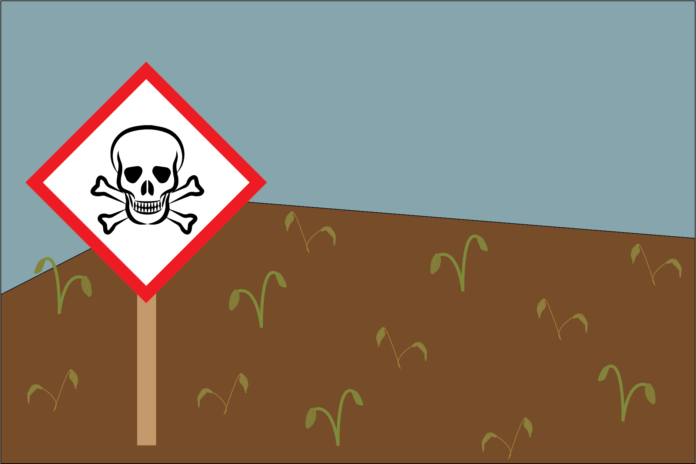Atrazine, a possible carcinogen and endocrine disruptor, is one of the most commonly used weed killers in the U.S.
From recent findings suggesting that COVID-19 was found in sewage samples in Spain as far back as March 2019 to environmental attorney Robert Bilott’s novel “Exposure” on his decades long battle over unregulated chemical contamination in tap water, water quality has never been so important to the American public. These invisible threats are not just nameless chemicals—they can be found in everyday products. For instance, Atrazine might not be a household name to most people, but it’s one of the most common pesticides in the world. Since the 1950s, it has been one of the most popular weed killers for a variety of agricultural uses. Roughly 70 million pounds are used every single year in the U.S. Because of its overwhelming use, Atrazine has been a subject of hot debate in the U.S. for years. So let’s clear up any misinformation there is out there.
Firstly, Atrazine is definitively bad for the environment. It is a commonly accepted fact that it has a wide array of detrimental side effects on wildlife. Multiple studies have chronicled the dangerous effects of Atrazine on frog reproduction and endocrine systems, even in small doses. It also has been shown to increase induction of mammary glands and rates of prostate cancer in rodents, cause irregularities in fish reproductive organs and generally harm fish reproduction. According to data taken between 1992 and 2001, it is also one of the most commonly found pesticides in streams and groundwater. Ultimately, this hurts the ability of a population as a whole to reproduce. Because of the ubiquitous nature of Atrazine pollution, this is ultimately harmful to the entire species as it is also incredibly persistent. In fact, a study in Germany found little to no decrease in levels of Atrazine concentrations in ground and drinking water even 20 years after it had been banned.
Professor Tyrone Hayes, one of the leading experts on Atrazine, was one of the first researchers in the U.S. to study its effects on African clawed frogs. In a TED Talk in 2018, he remarked: “Now, I showed this to the Environmental Protection Agency (EPA) because I thought they would be interested. After all this is the number one selling chemical in the world at the time and they said ‘that’s not really an adverse effect that would stimulate us to reassess the chemical.’”
Germany banned it in 1991 and the European Union banned it in 2003, but in April the EPA reaffirmed its approval of the use of Atrazine. Besides the obvious environmental repercussions, there are also public health considerations in banning Atrazine. If it has such an enormously destructive impact on wildlife, what exactly are its effects on people?
Firstly, it is a possible carcinogen. It has been linked with higher levels of breast cancer and possibly increased rates of prostate cancer. It also has been found to have a wide variety of reproductive side effects from increased birth defects to increased miscarriages. There are also likely harmful effects on the human endocrine system.
The people primarily feeling the brunt of these effects are farmworkers and people living in rural areas where Atrazine is most commonly used. As the majority of farmworkers in the U.S., especially in California, are part of the Latinx community, this is a social justice issue. Also, before anyone starts spouting about the economy, banning Atrazine would likely benefit farmers. It would reduce corn production, which in turn would allow them to increase corn prices. So why not ban a possibly carcinogenic endocrine disruptor? The answer is simple: The EPA is only ignorant on this issue because massive agricultural corporations like Sygenta want them to be.
“To please Syngenta, the Trump EPA has rejected decades of independent research showing atrazine can’t be safely used at any level,” said Nathan Donley, a senior scientist at the Center for Biological Diversity’s Environmental Health Program. “The pro-industry zealots now running the EPA’s pesticide office are making a mockery of science and eliminating key safety measures, all for company profits.”
So what can you do? Well, several public health groups have already sued the Trump Administration’s EPA for this move, but there are still many ways to educate yourself and act on this issue. You can check out The Pesticide Action Network’s action toolkits to learn more. Additionally, you can donate to the Center for Biological Diversity and PAN to support their ongoing efforts and legal fees.
Written by: Joe Sweeney –– jmsweeney@ucdavis.edu
Disclaimer: The views and opinions expressed by individual columnists belong to the columnists alone and do not necessarily indicate the views and opinions held by The California Aggie




